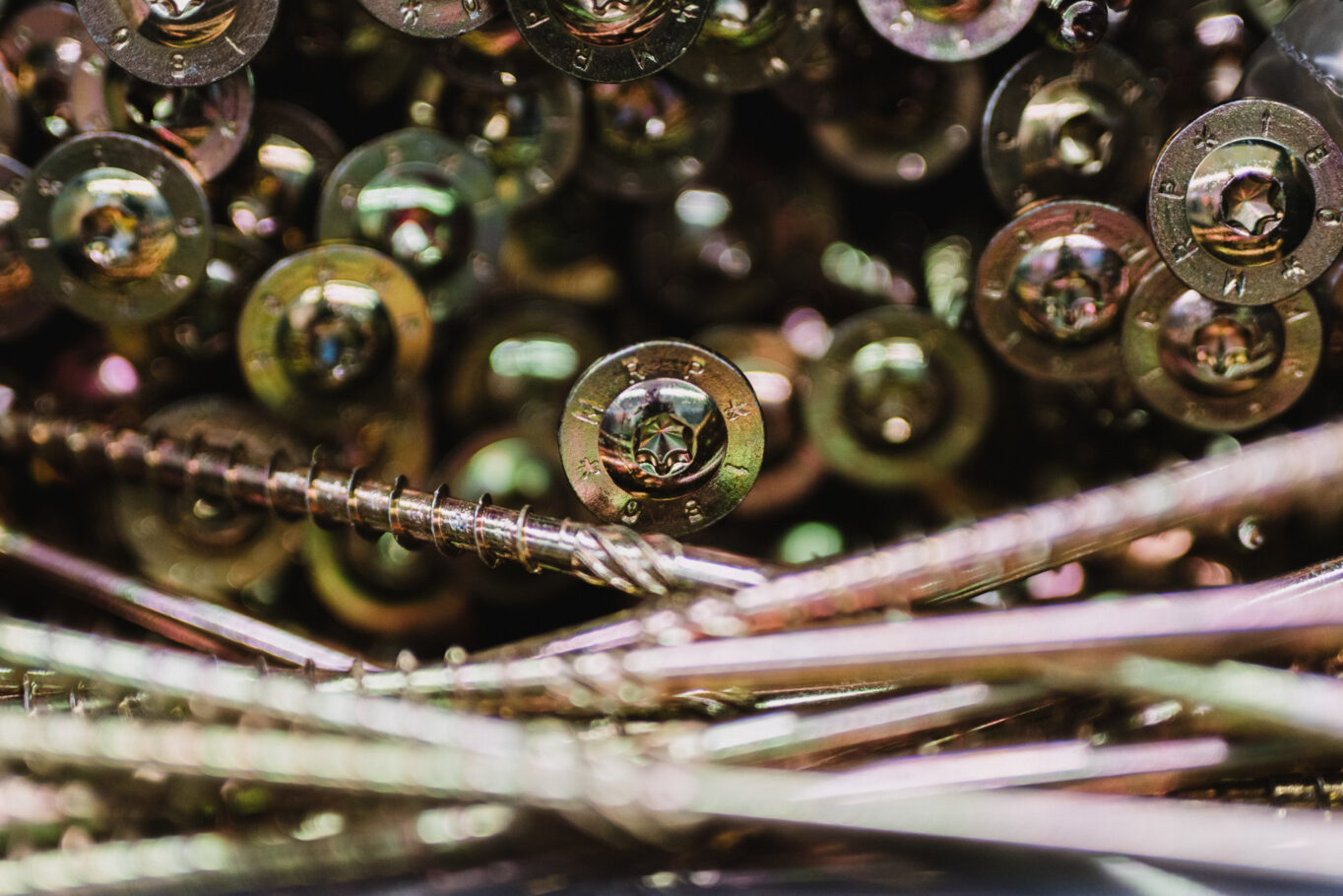
What are the types of screws and what are they used for?
Screws are essential fasteners in construction and assembly work. Thanks to the variety of screw types, they can be used with different materials such as wood, metal, concrete, or plasterboard. Choosing the right screws for a specific material is key to ensuring the durability and stability of the connection. In this article, we provide a detailed classification of screws and explain their applications in various contexts.
What are screws?
Screws are fasteners used to join different materials. They are characterized by a thread that allows them to be driven into a surface. Screws vary in head shape, length, diameter, and thread type. They can be made from various materials, including stainless steel, which enhances their strength and corrosion resistance. Wood screws, for instance, are specifically designed for easy driving into wooden elements—an essential feature in many construction projects.
Screws come in many variants, from traditional wood screws to self-drilling screws that don’t require pre-drilled holes. Furthermore, different head shapes—such as countersunk or cylindrical—allow screws to be matched to the aesthetic and functional needs of the installation. Thread pitch also varies, enabling use in different materials depending on the mounting requirements.
Types of screws available
Screws can be classified in several ways, including by the material they are intended for. Screws for wood, metal, or concrete differ in diameter and length, which affects their application. Universal screws are often used across various materials, though they may be less effective for specialized uses. For example, farmer screws are designed for fastening components in demanding environments such as agricultural construction.
There are also specialized screws like confirmat screws used in furniture making to join wooden parts. Different thread profiles among screw types influence their performance in different materials. Understanding these distinctions is essential to selecting the right screws for the job and ensuring structural durability and stability.
How to choose screws for wood?
Choosing the right screws for wood is crucial when joining wooden components. Wood screws differ from standard screws in their thread design, which is tailored to the material’s characteristics. It’s important to consider the screw’s length and diameter to ensure secure fastening. Carpenter screws, for example, typically have a countersunk head that enables easy driving and minimizes the risk of splitting the wood.
Another key factor is using the correct drill bits when preparing holes, especially in harder wood species. The hole diameter should match the screw size to provide optimal fastening. For thicker wood pieces, self-drilling screws are worth considering, as they allow for quick and easy joining without the need for pre-drilling.
What to know about screws for metal?
Metal screws are specialized fasteners designed to connect sheet metal and other metal components. They feature robust construction and a suitable thread that enables secure fixing in hard materials like steel. Metal screws often have a pan head, allowing them to sit flush with the mounted surface. Choosing the right type of screw depends on the sheet thickness and the required load capacity.
When installing metal screws, using appropriate tools like drills and screwdrivers is important to simplify the process. Self-drilling screws for metal are also available and speed up installation by eliminating the need for pre-drilling. It’s also essential to consider the material of the screw itself—zinc-coated screws, for example, offer better corrosion resistance and maintain their properties longer in harsh conditions.
Which screws to use for drywall?
Choosing screws for drywall (gypsum plasterboards) is important in interior finishing work. Drywall screws are designed with a special thread that minimizes the risk of tearing the cardboard layer during installation. The screw length and diameter should match the thickness of the board to ensure proper fastening. Typically, drywall screws feature a countersunk head that allows them to sit flush with finishing materials.
It’s also worth considering self-drilling drywall screws, which enable quick and easy installation without pre-drilling. Properly chosen drywall screws ensure stability and safety in interior constructions, which is crucial for high-quality finishing. Remember: the right screw selection guarantees both durability and aesthetics in any building project.
- Wood screws – selecting length and thread type - 29 October 2025
- Rivet Nuts – sizes, types, and how to use them - 29 October 2025
- Trust the results — act with confidence - 10 October 2025